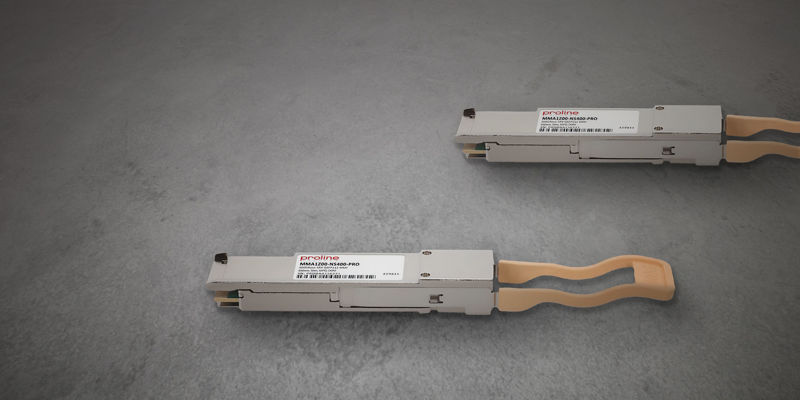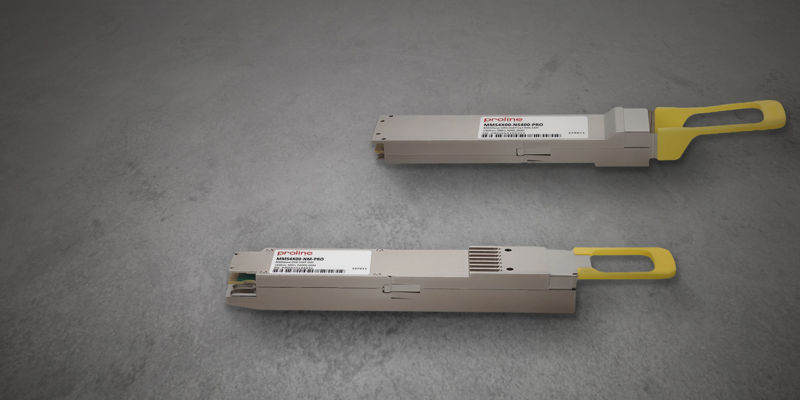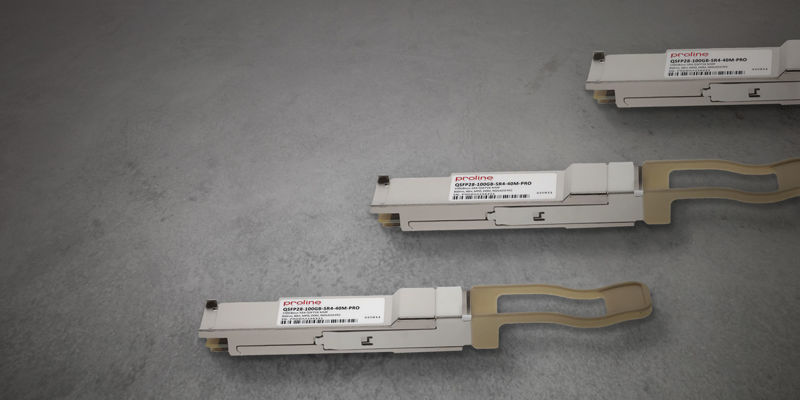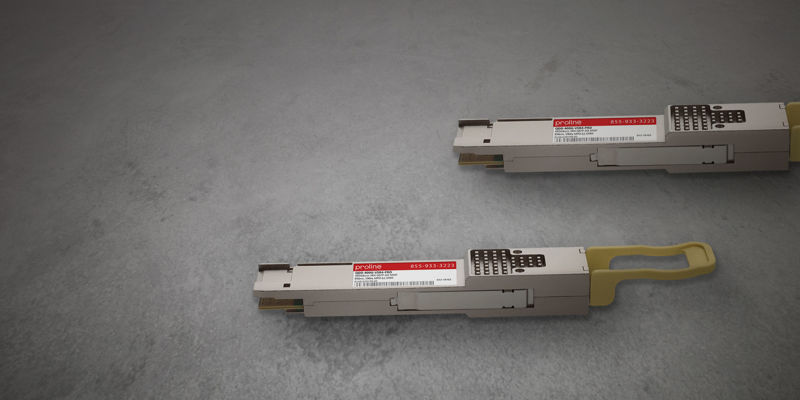When building fiber optic cabling, many choices must be made. Choosing single mode or multi-mode installation is unquestionably one of the most crucial decisions. Understanding the distinctions between these two kinds of fiber glass are crucial since it will have a significant impact on your network's range, bandwidth, and spending.
Overview of Single Mode vs. Multi-mode Fiber Optic Cable
Single mode means the fiber enables one type of light mode to be propagated at a time. While multi-mode means that fiber can transmit data in multiple modes. The primary distinction between single mode and multi-mode fiber optic cable is the fiber core diameter, wavelength & light source, bandwidth, color sheath, distance, and cost.
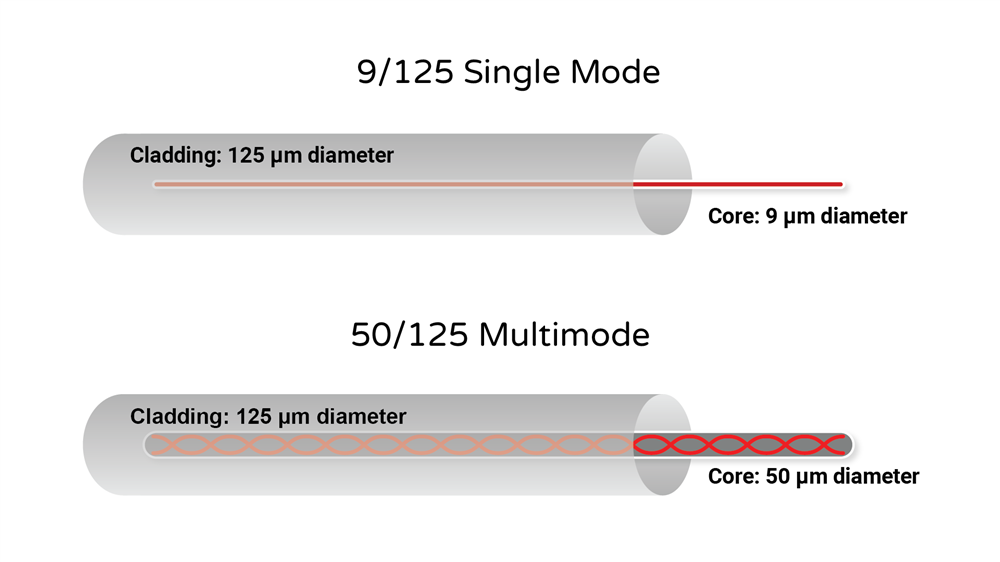
Core Diameter
Single mode fiber: one that has a small light-carrying core that is about 9 micrometers (µm) in diameter. The core is surrounded by cladding, which increases the optical fiber's overall diameter to 125 µm.
Multi-mode fiber: a fiber core diameter of 50 µm or more, which improves "light gathering" and makes connections easier. Similar to single mode, the core is encased in cladding, increasing the optical fiber's overall diameter to 125 µm.
9/125 Single Mode Fiber Simplex | 50/125 OM3 Multi-mode Fiber | ||
Attenuation at 1310nm | 0.36 dB/km | Attenuation at 850nm | 3.0 dB/km |
Attenuation at 1550nm | 0.22 dB/km | Attenuation at 1300nm | 1.0 dB/km |
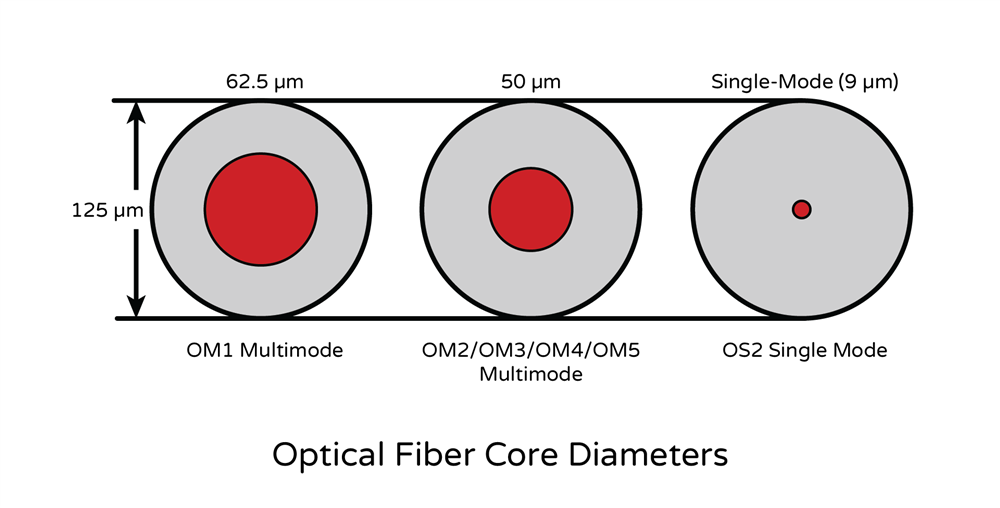
Due to its larger core diameter, multi-mode fiber exhibits more attenuation than single mode fiber. Since single mode fiber optic cables have a relatively tiny fiber core, very little light is reflected as it travels through them, minimizing attenuation.
Wavelength & Light Source
Given the large core size of multi-mode fiber, low-cost light sources such as LEDs (light-emitting diodes) and VCSELs (vertical cavity surface-emitting lasers) with wavelengths of 850nm and 1300nm are used in multi-mode fiber cables. While single mode fiber frequently employs a laser or laser diodes to generate light that is injected into the cable. The most common single mode fiber wavelengths are 1310nm and 1550nm.
Bandwidth
The maximum bandwidth of multi-mode fiber is currently 28000MHz*km of OM5 fiber. While single mode fiber bandwidth is theoretically unlimited because it allows only one light mode to pass through at a time.
Color Sheath
According to the TIA-598C standard definition, single mode cable is coated with a yellow outer sheath, and multi-mode fiber is coated with an orange or aqua jacket.
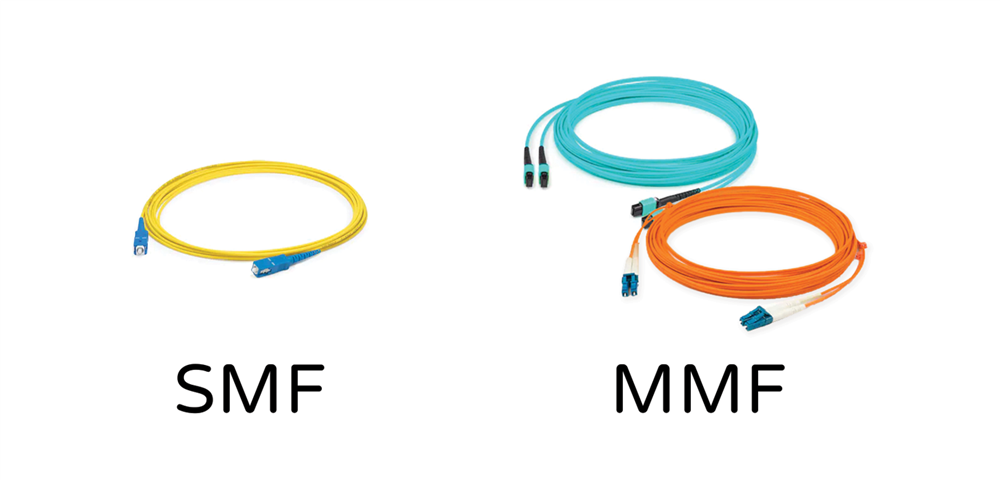
Single mode vs. Multi-mode Distance
Fiber Optic Cable Type | Fiber Distance | |||||||
Fast Ethernet | 1Gb Ethernet | 10Gb Ethernet | 10GBase | 25GBase | 40GBase | 100GBase | ||
Single mode fiber | OS2 | 200m | 5000m | 5000m | 10km | / | / | / |
Multi-mode fiber | OM1 | 200m | 275m | 550m (mode conditioning patch cable required) | / | / | / | / |
OM2 | 200m | 550m | / | / | / | / | ||
OM3 | 200m | 550m | 300m | 70m | 100m | 100m | ||
OM4 | 200m | 550m | 400m | 100m | 150m | 150m | ||
OM5 | 200m | 550m | 300m | 100m | 400m | 400m | ||
Single mode vs. Multi-mode: Which Should I Choose?
The first factor to consider when deciding between single mode and multi-mode fiber cables is the fiber distance required. For example, in data centers multi-mode fiber cables are sufficient for distances of 300-400m. Single mode fiber is the best choice for applications requiring distances of thousands of meters or more. In applications where single mode and multi-mode fiber can be used, other factors such as cost and future upgrade requirements should be considered.
It is clear from the comparison of single mode and multi-mode fiber optic cable that single-mode fiber cabling systems are best suited for long-distance data transmission applications and are frequently used in carrier networks and passive optical networks (PONs). Whereas in businesses, data centers, and local area networks (LANs), multi-mode fiber cabling systems are commonly used because of their shorter reach. No matter which one you select, it's crucial to choose the best one that meets your network needs.
For more information, or a quote contact us or visit our fiber optic cable product page.
Your fiber optic solution is here
Explore the benefits of working with us. Get started today!
